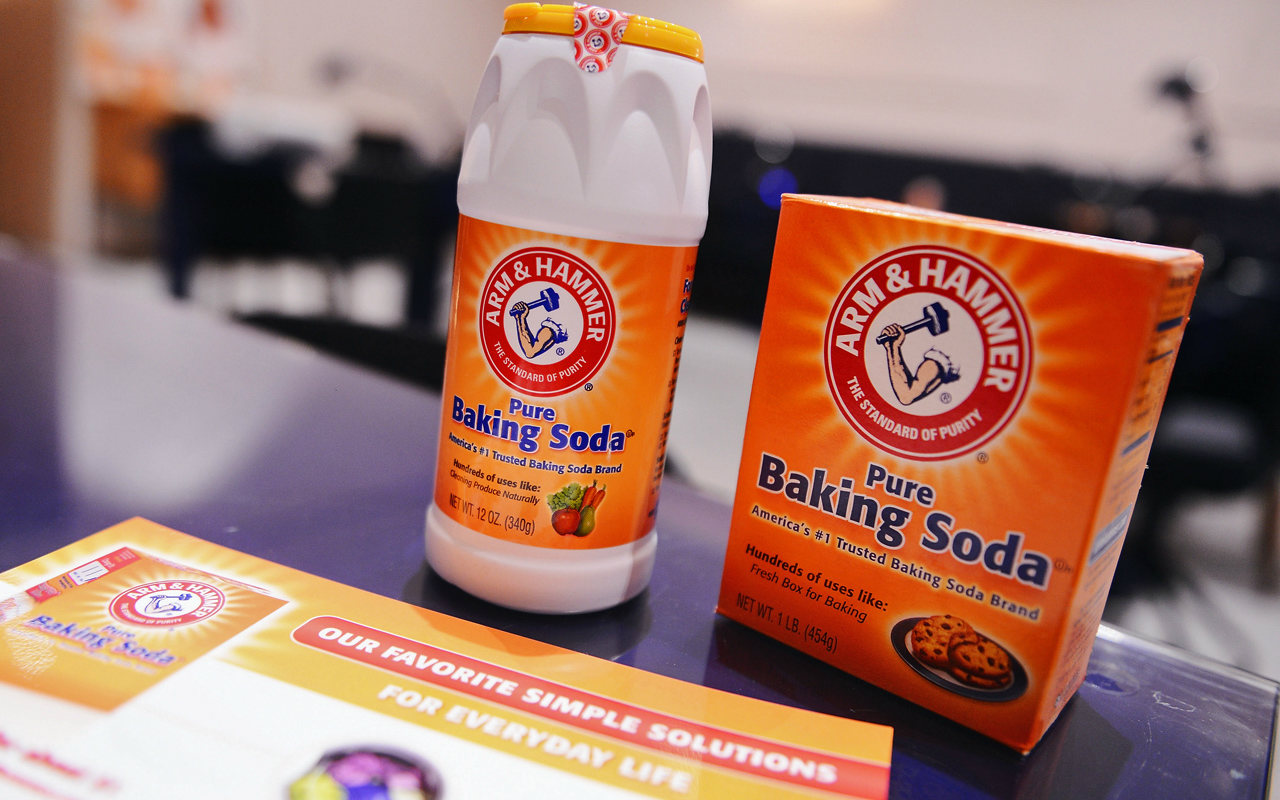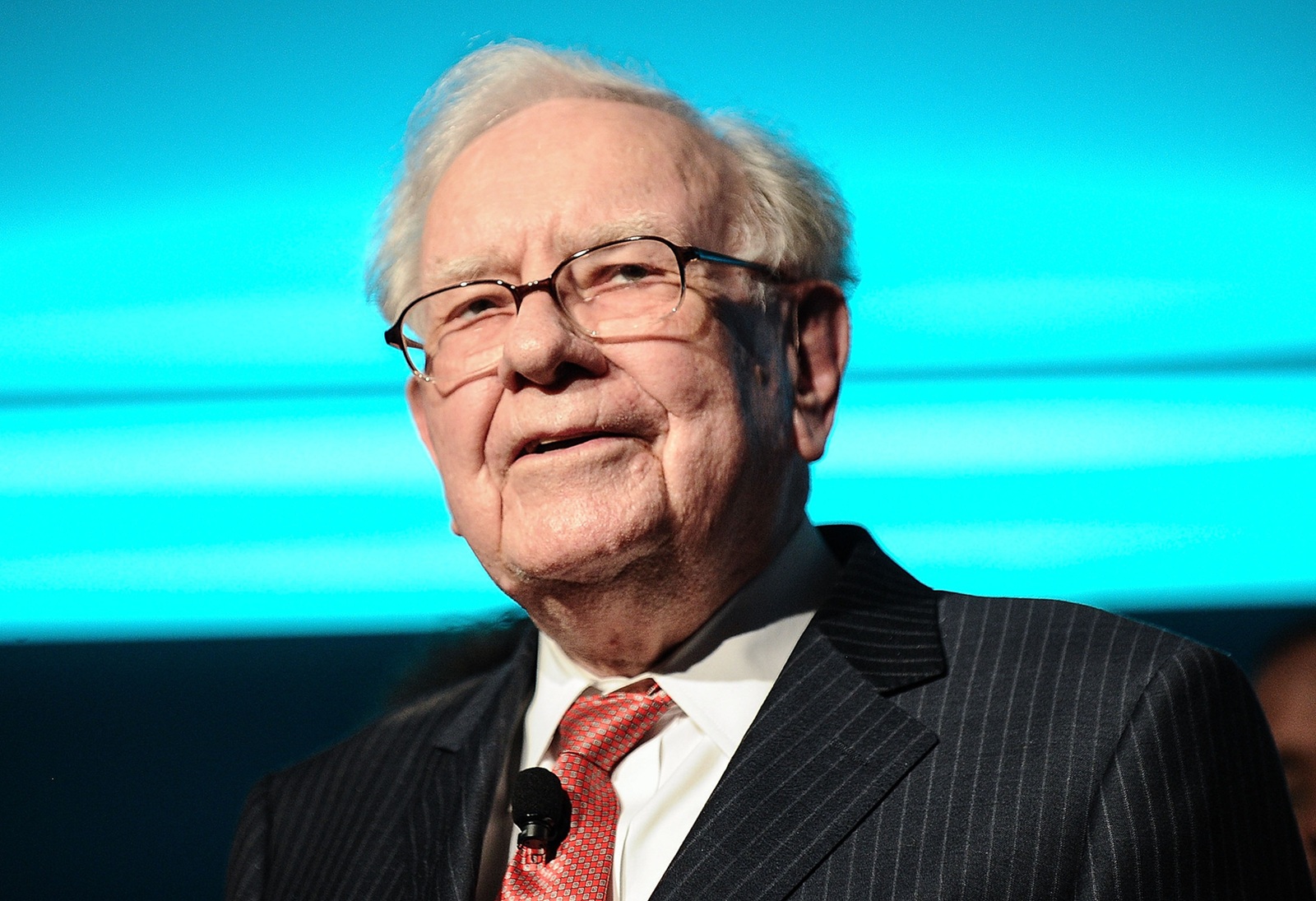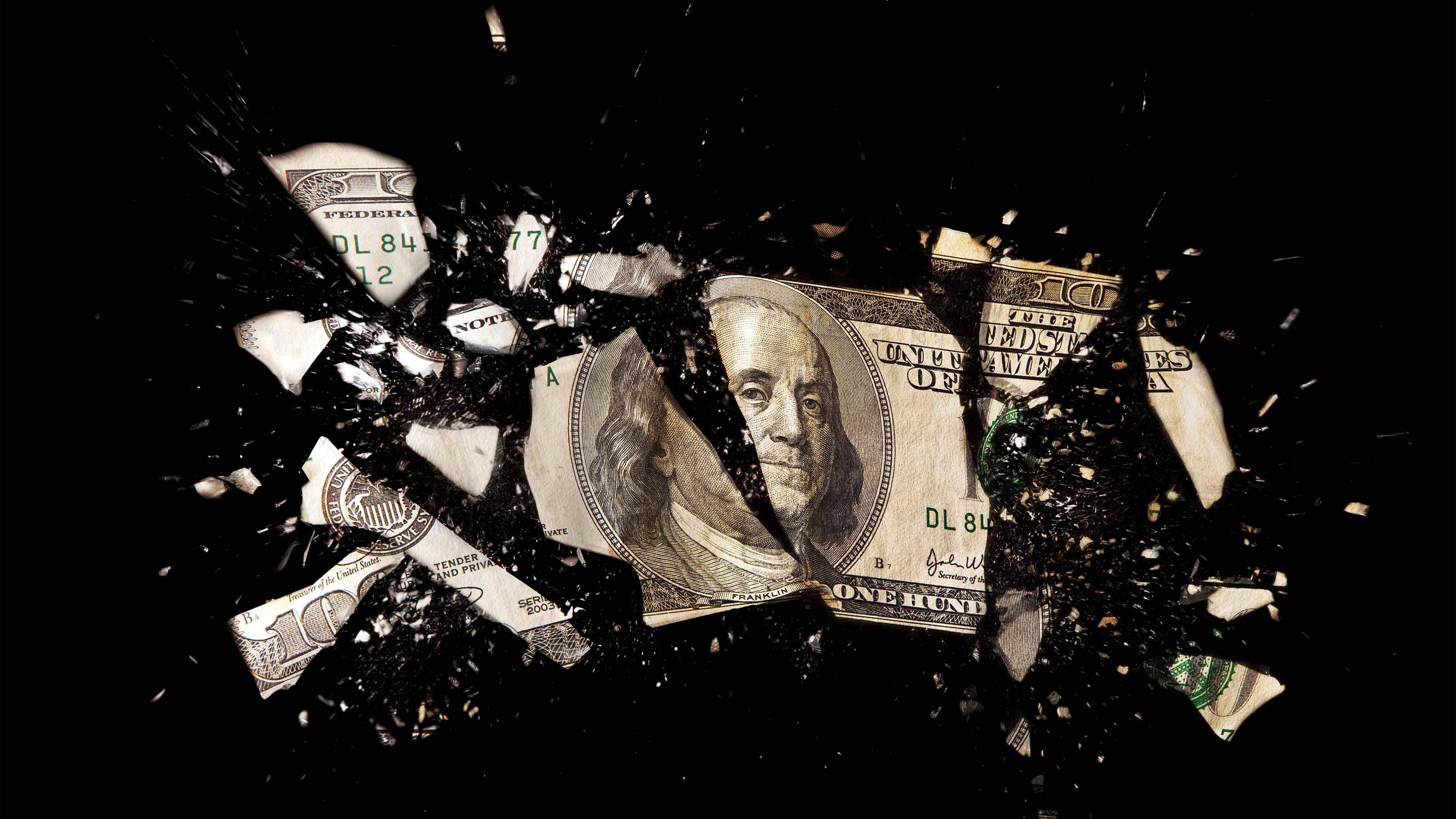10 Top Consumer Stocks to Stuff in Your Cart
The rough end to 2018 put analysts on their toes as they looked ahead toward 2019.


The rough end to 2018 put analysts on their toes as they looked ahead toward 2019. Some experts suggested that with U.S. GDP growth projected to slow, investors should rotate into more defensive sectors such as consumer staples and healthcare. However, others said the markets would surprise the pessimists with a robust recovery.
“Based on fundamentals, I don’t think the pullback we had in this market was ever justified. Markets will do what they’ll do. I think you have significant upside here,” Jonathan Golub, chief U.S. equities strategist at Credit Suisse, told CNBC on Dec. 31. “Therefore, we would think that the bottom has been put in this market.”
If you lean toward 2019 being a bounce-back year, consumer stocks are an excellent choice to ride the wave.
One metric that drives the share prices of consumer stocks is the strength of the job market. If Americans are employed and their wages are growing, that will help consumer spending. Well, the U.S. has trounced expectations in two nonfarm payrolls reports announced this year (December and January), which should go a long way toward strengthening consumer spending trends.
Here are 10 of the best consumer stocks to buy for 2019. Some of these stocks are more defensive in nature – better suited for a volatile year. A few others are more aggressive and could ride a bullish wave better than most.
Data is as of Feb. 7. Dividend yields are calculated by annualizing the most recent quarterly payout and dividing by the share price. Analyst opinions provided by The Wall Street Journal.

Diageo
- Market value: $93.3 billion
- Dividend yield: 1.9%
- Forward P/E: 21.3
- Analysts’ opinion: 10 buy, 2 overweight, 9 hold, 2 underweight, 0 sell
When it comes to beer, wine and spirits companies, only a couple of companies are near the size and scale of Diageo (DEO, $153.67) – the name behind Johnnie Walker scotch, Crown Royal Canadian whisky and Guinness beer.
However, regarding profitability, Diageo has it over the rest of the alcoholic-beverages industry. Its 31% operating margin is 500 basis points higher than Pernod Ricard (PDRDY), one of its peers in the spirits business, and a fraction higher than mega-brewer Anheuser-Busch InBev (BUD).
Diageo has plenty going for it at the moment. For one, it announced in December that it plans to build a new distillery in Kentucky to house additional production of hot-selling Bulleit bourbon. The $130 million facility should be up and running by 2021 and capable of producing 34 million liters of the American whiskey.
It also has a couple interesting “what-if” scenarios. Activist investor Elliott Management is going after Pernod Ricard at the moment, but Diageo could be the better target. Bernstein analyst estimates put Guinness’ potential value at $10 billion as of 2015, and it likely could command more than that in a sale today. DEO also has been rumored to be looking for a partnership with a cannabis company similar to the ones Constellation Brands (STZ) and Molson Coors (TAP) entered. Nothing has materialized yet, but that may come in 2019.
Diageo boasts nearly two decades of uninterrupted dividend growth, making it a European Dividend Aristocrat. That makes DEO an excellent consumer stock for anyone seeking out stable income and reasonable capital appreciation.

Estee Lauder
- Market value: $55.5 billion
- Dividend yield: 1.1%
- Forward P/E: 28.5
- Analysts’ opinion: 14 buy, 3 overweight, 10 hold, 0 underweight, 1 sell
In good times and bad, people can’t seem to go without their lipstick and cosmetics, which is excellent news if you’re an Estee Lauder (EL, $152.31) shareholder. 2018 wasn’t a great year for the company’s stock, which delivered a total return of just 3.4%, but that’s far better than the 4.6% loss (including dividends) for the Standard & Poor’s 500-stock index.
One area that should continue to drive Estee Lauder’s growth in 2019 is travel retail, a segment of the retail industry that rarely gets any coverage, but one that continues to flourish. In December, the company opened a newly renovated 1,510-square-foot store at the Haitang Bay duty-free shopping complex in Sanya, China. It’s Estee Lauder’s largest travel retail location.
In addition to travel retail, the company continues to build an online presence both with its own e-commerce sites and through third-party sites which promote and sell its products. In more than 40 countries, customers can book appointments online to get makeup done in store, track company loyalty programs and use Estee Lauder’s mobile sites to learn more about its products.
Estee Lauder typically provides ballast when the market is suffering, such as in 2008, when EL lost just 28% versus a 37% deficit for the S&P 500. But you can expect a much better year than that for EL in 2019.

Constellation Brands
- Market value: $33.0 billion
- Dividend yield: 1.7%
- Forward P/E: 18.1
- Analysts’ opinion: 18 buy, 3 overweight, 5 hold, 0 underweight, 0 sell
If investors were asked which non-cannabis company made the biggest splash in the cannabis industry in 2018, the top answer likely would be Constellation Brands (STZ, $174.05).
STZ first jumped on the bandwagon in October 2017, taking a 9.9% stake in Canopy Growth (CGC) for $179 million. Then in August 2018, Constellation went from mildly interested in the cannabis space to completely sold on it, by acquiring an additional 104.5 million shares for $3.9 billion, raising its stake to 38%. It also was given an option to exercise 139.7 million warrants over the next three years that would give it majority control.
The deal was good for both companies.
Canopy got access to a world-class manufacturer and distributor of alcoholic beverages while Constellation obtained the cannabis company’s expertise, which will come in handy for developing cannabis-infused drinks in time for Canadian legalization of edibles in October 2019.
“We’re going to see this shift away from a culture which has had one legal psychoactive for social and leisure activities, being alcohol, to a culture where there’s now a second psychoactive that’s acceptable in those same situations,” Dooma Wendschuh, co-founder and CEO of Toronto-based Province Brands, told Canada’s National Post in December.
This will be an exciting year for the cannabis industry. Constellation Brands will benefit significantly by having a front-row seat.

Lululemon
- Market value: $19.6 billion
- Dividend yield: N/A
- Forward P/E: 33.8
- Analysts’ opinion: 23 buy, 2 overweight, 10 hold, 0 underweight, 2 sell
- Lululemon’s (LULU, $147.63) controversial founder, Chip Wilson, isn’t involved with the business anymore, but remains its fourth-largest shareholder.
Where would Lululemon be with him still on board? “I think that the company would be a mindfulness company mostly that would be deep into yoga,” Wilson told CNN Business recently. “I think it would be far more global than it is now. The company would have been worth 30, 40% more than it is now.”
Wilson fails to mention that the athletic clothing company grew his wealth significantly since he stepped down from the company’s board in 2015.
He also neglects to admit that the company’s plan to hit $4 billion in annual revenue by the end of fiscal 2020 is ahead of schedule. In the fiscal year ended Feb. 3, LULU expects to generate annual revenue of $3.2 billion – 22% higher than a year earlier. Another year of 20% growth in fiscal 2019, and Lululemon will need just 4% growth in FY2020 to meet its ambitious target.
“We believe double-digit revenue growth can continue and see the 2020 objective $4 billion in revenue and implied earnings power of $5 as low hurdles,” Stifel analyst Jim Duffy wrote in December. “With market tailwinds from growing global concern for health, fitness, and self-actualization, we believe Lululemon has a long runway for global growth and advocate owning shares as a core holding.”

Church & Dwight
- Market value: $15.5 billion
- Dividend yield: 1.5%
- Forward P/E: 25.5
- Analysts’ opinion: 5 buy, 1 overweight, 13 hold, 1 underweight, 2 sell
- Church & Dwight (CHD, $62.58) – the consumer packaged goods company with brands such as Arm & Hammer baking soda, Oxi Clean stain remover and Trojan condoms – is the little engine that could. It delivered a total return of 32.8% in 2018, leaving most of Wall Street in its dust.
Longtime shareholders can attest to the stock’s consistency. It hasn’t had a negative year in the past decade, and it has generated a 10-year annualized total return of 17.7% – around 330 basis points clear of the index.
Why did Church & Dwight perform so well in 2018?
It continued to grow sales organically. In its fourth-quarter report, CHD said it grew organic sales by 4.3% in 2018, fueling overall revenue growth of 9.8%. The company sees organic sales continuing to increase by 3.5% in 2019. Conservative to a fault, Church & Dwight may just exceed this projection.
Internationally, business is even stronger, generating organic sales growth of 5% for the year. In August, Church & Dwight entered into a long-term cooperation agreement with Chinese consumer packaged goods company Shanghai Jahwa. It will be the company’s omnichannel distributor for its baking soda, toothpaste, dry shampoo and feminine hygiene products for mainland China.
If you’re looking to go defensive in 2019, you couldn’t buy a better consumer stock.

Post Holdings
- Market value: $6.5 billion
- Dividend yield: N/A
- Forward P/E: 15.9
- Analysts’ opinion: 7 buy, 0 overweight, 3 hold, 0 underweight, 0 sell
If there’s a stock on this list that flies under the radar, St. Louis-based consumer packaged goods company Post Holdings (POST, $96.63) would have to be it.
Post Holdings got its start in 2012 when it was spun off from its parent at the time, Ralcorp Holdings. However, the name Post has been around since the late 1890s, when C.W. Post introduced Grape-Nuts cereal.
The company finished its first fiscal year as an independent public company with $900 million in revenue. Six years and 15 acquisitions later, Post ended fiscal 2018 with more than $6 billion in revenue, operating several businesses in addition to its legacy Post-branded cereals.
Post Consumer Brands accounted for 29% of 2018’s overall revenue, the largest segment of its business. In 2017, Post acquired Bob Evans Farms, a maker of vegetable-based side dishes and breakfast sausages, for $1.5 billion, adding a vital name to its refrigerated retail and foodservice business.
Although it did complete one acquisition in fiscal 2018, Post focused more of its attention on growing sales organically. It finished the fiscal year generating more than 50% of its EBITDA from businesses that are growing sales by more than 6% per year.
Post delivered a 12.5% total return for shareholders in 2018 – the third year of the past five in which it has produced double-digit gains.

Canada Goose
- Market value: $6.1 billion
- Dividend yield: N/A
- Forward P/E: 86.7
- Analysts’ opinion: 12 buy, 0 overweight, 4 hold, 0 underweight, 1 sell
If you’re paying attention to the trade war between the U.S. and China, you’re probably familiar with Canada Goose (GOOS, $54.54), the Toronto-based maker of parkas and other clothing useful in cold weather. As the two countries continue their tit-for-tat fight over trade, Canada Goose’s high-flying stock has gotten caught in the middle – despite rallying since the start of the year, GOOS still is off 20% from a high in early December.
Chinese consumers threatened to boycott the company’s products after Huawei CFO Meng Wanzhou was arrested in Vancouver at the request of the U.S. judicial system, which is seeking the executive’s extradition to face fraud charges.
Not to worry. When Canada Goose opened its first Mainland China store Dec. 28, Chinese consumers lined up to buy the company’s $1,300 parkas, putting aside any concern the boycott was gaining traction. Also, China currently accounts for just 10% of the company’s revenue, but that should increase as more stores open on the mainland.
As we head further into 2019, Canada Goose’s business is operating at full speed, with wholesale, online and brick-and-mortar sales growing by double digits in its most recent quarterly report. (It reports again on Valentine’s Day.)
Investors are starting to believe again in Canada Goose’s upside and should take it out of bear-market territory sometime this year.

Helen of Troy
- Market value: $2.9 billion
- Dividend yield: N/A
- Forward P/E: 14.2
- Analysts’ opinion: 4 buy, 1 overweight, 0 hold, 0 underweight, 0 sell
Investors might not be familiar with Helen of Troy (HELE, $115.21) – a consumer products company that has quietly built a stable of brands through acquisitions and organic growth, and that successfully competes on the global stage. Helen’s brands should be more familiar, though: OXO kitchen gadgets, Vicks humidifiers, Honeywell air purifiers, Braun thermometers, PUR water filtration systems and Revlon beauty products, among others.
Over the last four years, Helen of Troy has grown its revenues by 3.1% compounded annually, adjusted earnings by 12.6%, and free cash flow by 15.9%. That’s a big reason its stock has generated an annual total return of 25.9%, more than double the S&P 500.
In 2019, the company is focusing on growing its seven leadership brands — the five mentioned above plus, Hot Tools Professional (curling irons, hair dryers) and Hydro Flask (water bottles, etc.) — while also working to reduce costs through shared services between its different businesses to generate additional cash flow. It will continue to make acquisitions that strengthen its market share in its three operating segments: housewares, health & home, and beauty.
As consumer products companies go, Helen of Troy is one to beat in 2019.

BRP
- Market value: $2.6 billion
- Dividend yield: 1.0%
- Forward P/E: 7.6
- Analysts’ opinion: 8 buy, 2 overweight, 2 hold, 0 underweight, 0 sell
- BRP (DOOO, $27.49) is the corporate name behind powersports brands Ski-Doo, Sea-Doo and CanAm. But while the company’s seasonal products such as personal watercraft and snowmobiles continue to grow, it is the year-round ATVs and SSVs that are responsible for much of the stock’s 36.0% annual total return over the past three years.
In BRPs most recent quarterly report ended Oct. 31, year-round-product revenues grew 21.1% year-over-year to C$562.4 million, accounting for 40% of its C$1.4 billion in overall sales. Seasonal products delivered 3.2% sales growth.
BRP also added a new operating segment in fiscal 2019, first acquiring Alumacraft Boat, a manufacturer of aluminum fishing boats, for C$85.4 million in June; it then paid C$97.4 million to buy Triton Industries, a manufacturer of pontoon boats under the Manitou brand. The creation of the Marine group provides BRP with a fourth revenue stream of growth in 2019.
Just one note of caution: While BRP’s SSV business continues to outsell the competition — between the three months of August to October, BRP grew SSVs in the mid-20s compared to mid-single digits for the industry as a whole — it’s starting to face increased competition from Honda (HMC) and others, making it more difficult to take market share.
Still, DOOO shares were particularly hard-hit in the back half of last year, losing more than half their value since Sept. 1. That has left BRP dirt-cheap, making it a strong potential rebound play in 2019.

Tesla
- Market value: $51.5 billion
- Dividend yield: N/A
- Forward P/E: 49.0
- Analysts’ opinion: 8 buy, 1 overweight, 8 hold, 3 underweight, 8 sell
- Tesla (TSLA, $307.51) is the most speculative of the picks on this list. It’s facing several headwinds, it has several self-inflicted injuries and it’s not exactly an analyst favorite. But it managed a market-beating 7% return in 2018 while the S&P 500 was down despite a similar murderer’s row of worries; it could surprise again.
Tesla announced Jan. 2 that it delivered 90,700 vehicles in the final quarter of 2018 – that’s 8% better than the previous quarter, and a little more than triple the deliveries it made in Q4 2017.
Unfortunately, Tesla also revealed that it was lowering the price of all three of its models — Model 3, Model S, and Model X — by $2,000 to limit the impact as the federal government’s tax credit starts to wind down. Tesla recently cut the price again to bring the Model 3 price down to $42,900.
But what really matters is the number of Model 3s that Tesla sells.
Tesla said more than 75% of its Model 3 orders in Q4 2018 were from new customers rather than existing reservation holders: a sign the carmaker is gaining traction with average car buyers, not just those who are tech-savvy.
While analysts were expecting 2,000 more vehicle deliveries in the fourth quarter, Tesla feels the Model 3 – including its expansion into China and Europe, lower-priced versions of the model, leasing options, and a right-hand drive option at some point in 2019 – have so far only scraped the surface of its opportunity.
This won’t be an easy year – the company announced in late January that it lost its CFO, and that earnings fell short of expectations. But this exciting EV maker still should post plenty of growth in 2019.
Profit and prosper with the best of Kiplinger's advice on investing, taxes, retirement, personal finance and much more. Delivered daily. Enter your email in the box and click Sign Me Up.

Will has written professionally for investment and finance publications in both the U.S. and Canada since 2004. A native of Toronto, Canada, his sole objective is to help people become better and more informed investors. Fascinated by how companies make money, he's a keen student of business history. Married and now living in Halifax, Nova Scotia, he's also got an interest in equity and debt crowdfunding.
-
 Planning a Major Home Renovation? 3 Smart Ways to Finance It
Planning a Major Home Renovation? 3 Smart Ways to Finance ItFrom HELOCs to personal loans, here’s how to pay for a major home renovation without draining your savings.
-
 Six Warren Buffett Quotes Every Retiree Should Live By
Six Warren Buffett Quotes Every Retiree Should Live ByThe 'Oracle of Omaha' knows a thing or two about life, investing and retirement.
-
 The 24 Cheapest Places To Retire in the US
The 24 Cheapest Places To Retire in the USWhen you're trying to balance a fixed income with an enjoyable retirement, cost of living is a crucial factor to consider. Is your state the best?
-
 5 Stocks to Sell or Avoid Now
5 Stocks to Sell or Avoid Nowstocks to sell In a difficult market like this, weak positions can get even weaker. Wall Street analysts believe these five stocks should be near the front of your sell list.
-
 Best Stocks for Rising Interest Rates
Best Stocks for Rising Interest Ratesstocks The Federal Reserve has been aggressive in its rate hiking, and there's a chance it's not done yet. Here are eight of the best stocks for rising interest rates.
-
 The 5 Safest Vanguard Funds to Own in a Volatile Market
The 5 Safest Vanguard Funds to Own in a Volatile Marketrecession The safest Vanguard funds can help prepare investors for continued market tumult, but without high fees.
-
 The 5 Best Inflation-Proof Stocks
The 5 Best Inflation-Proof Stocksstocks Higher prices have been a major headache for investors, but these best inflation-proof stocks could help ease the impact.
-
 5 of the Best Preferred Stock ETFs for High and Stable Dividends
5 of the Best Preferred Stock ETFs for High and Stable DividendsETFs The best preferred stock ETFs allow you to reduce your risk by investing in baskets of preferred stocks.
-
 What Happens When the Retirement Honeymoon Phase Is Over?
What Happens When the Retirement Honeymoon Phase Is Over?In the early days, all is fun and exciting, but after a while, it may seem to some like they’ve lost as much as they’ve gained. What then?
-
 5 Top-Rated Housing Stocks With Long-Term Growth Potential
5 Top-Rated Housing Stocks With Long-Term Growth Potentialstocks Housing stocks have struggled as a red-hot market cools, but these Buy-rated picks could be worth a closer look.
